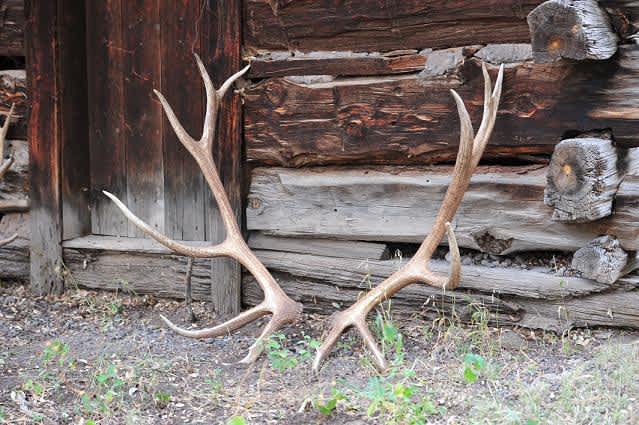Shed Hunting in the Gila National Forest of New Mexico
Gila Trophy Outfitters 07.27.11

By the time spring rolls around, my cabin fever has usually reached its peak and I’m more than ready to get out and hit the woods. The best thing about getting out in the spring months is that the elk and deer are starting to drop their antlers. If you find the right spots, the shed hunting can be very addicting and it’s all public land. This ups the motivation level tenfold to get out and start putting some miles on those hiking boots.
I have had some great success shed hunting in the last few years and I am always asked how I do it, and who taught me how to do it the way I do. So I want to share some of my shed hunting secrets. They’re not really big secrets, they just require some hard work and common sense.
People ask me all the time how I find so many elk sheds on public land and my response is pretty much the same every time: I know where the elk are and I walk a lot. If you know where the elk are watering, you’ve already got shed hunting somewhat figured out! Focus on where you’ve seen elk in the past and look for game trails and bedding areas.
Bring good binoculars and a high-power spotting scope with you and you’ll be even closer to the brown gold. Bring your GPS to mark where you find signs and watering areas.
Check your area as often as possible. We are talking about public land – if you think you’re the only guy out there looking for sheds, you’re going to get your feelings hurt real quick. Getting to know the locals is another good idea, so you don’t end up stepping on someone’s toes.
Once the roads have been checked and the easy sheds are in the back of the truck or on the quad, the hard work starts. You’ll want to walk to all water tanks and springs first. Just be ready for a long day and make sure you wear good boots for the rocky and rough terrain. I personally carry a lot of water because it’s so dry where we live.
At this point I concentrate on the Juniper benches and tall pine saddles. Lots of Juniper branches look a lot like sheds, and picking through them will be hard sometimes. But once you get the eye for it, you’ll come to the point that you see something that you think is a horn is usually in fact a horn!
I usually check the areas that the elk are traveling and look for a few hanging limbs that bulls have run into with their antlers, as well as looking for breaks on those Juniper trees.
Sometimes shed hunting can be frustrating when you don’t find any or run into lots of shed hunters. But if you keep a positive attitude and not give up you will always have a good time and feel good about your exercise program. I always look at the bright side even when I don’t find any: it could be worse, I could be at work or stuck at home with all the snow! And I love the part that I am in better shape by the time elk hunting season gets here. With all the sheds you’ve found, you’ll have a better idea of where bulls will be.
The spring shed hunting months are also a great time to test out new gear. New boots and a new pack are always on my list to see which ones hold up in our terrain.
Shed Hunting Equipment used on my trip:
- She Outdoor Apparel
- Swarovski 10 x 40 and Swarovski Spotting scope 20-60
- Irish Setter Boots
- Badlands pack or our Bull packs when needed.
Patricia Marshall and her husband Chad are the owners of Gila Trophy Outfitters, a husband and wife team that’s been hunting and guiding the Gila National Forest of New Mexico for decades. Visit their website at www.gilatrophyoutfitters.com.

